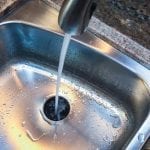If you’re looking to raise the value of your home or update the look of your facade, new exterior siding is one of the best investments you can make. If you live in the Springfield, Missouri area, new siding projects are reported to retain 75.6% of their value in Springfield according to Remodeling magazine’s 2019 Cost vs. Value Report.
In addition to boosting curb appeal or giving your home a modern touch, good quality siding protects your home from the elements and may lower heating and cooling costs through increased insulation. Properly installed siding can also make your home less vulnerable to moisture, mold, insects and structural damage.
Some important factors to consider when choosing the best siding for your house are durability, efficiency, maintenance requirements and, of course, cost. With those factors in mind, we’ve compiled a comprehensive summary of the most common exterior siding types and materials in alphabetical order to help you narrow down which siding could work best for your home.
Brick
A long-time staple of traditional homes, a brick house exterior combines durability and low maintenance requirements with a timeless look.
Once installed, brick exteriors don’t often need extensive repainting or refinishing and can stand up to extreme temperatures and severe weather. Over time, many homeowners might choose to modernize or update a traditional red brick exterior with white or gray paint options.
Brick is one of the more expensive choices for siding due to its heavy weight and installation requirements. Homeowners looking for a more affordable option might want to consider installing brick veneer, a thin layer of brick installed over an insulated, weather-resistant sheath.
Engineered Wood
Engineered wood siding is a great alternative for those who love the classic look of exterior wood siding without all the classic headaches that come with it.
Traditional or natural wood siding must eventually be replaced, as it will bow and split after being exposed to the elements. It is vulnerable to moisture, rot, mold and insects and requires regular treatment to stave off these problems.
Engineered wood siding is made from a composite of wood strands coated with resin, and it better tolerates insects, extreme temperatures, high winds, humidity and moisture. The resin coating of engineered wood offers added insulation for efficiency and energy-saving benefits.
Fiber Cement
Made from a mixture of wood pulp and Portland cement, fiber cement is a customizable material that can mimic the look of other types of exterior siding including shake, wood, stone or brick and can be a more flexible alternative to vinyl siding.
Fiber cement resists rot, termites and fire, and tolerates high winds and cold temperatures. Proper fiber cement maintenance is simple, and homeowners will just need to spray down the siding with a garden hose every 6-12 months. To add to its flexibility, fiber cement can also be painted or stained in a variety of colors and also works well as a trim.
Unlike vinyl siding, as a heavier material, fiber cement may cost more to install compared to other exterior siding options.
Metal
Strong and durable, aluminum siding is rust-, rot-, fire-, insect- and weather-resistant. Aluminum and other metal house siding options are vulnerable to dents and scratches and may require repainting every 10 years. Other metal siding options include steel and copper.
Aluminum, stainless steel and other metals used as exterior siding can reflect sunlight which may help to lower your cooling costs during the summer.
Stone
Available in a wide range of colors and textures, stone and stacked stone siding designs can give your home a sophisticated, upscale appearance.
Natural stone is one of the more expensive siding options and may also cost more to install over materials like brick siding or fiber cement. Fabricated stone or ‘faux stone’ made from cement can give you the same natural look of real stone at a lower price.
Both natural and fabricated stone are durable, weather-resistant options that require little maintenance.
Stucco
What is stucco? Made from a mixture of cement, sand, lime, epoxy and water, stucco is a solid material used to coat home exteriors that requires no additional painting and gives your house an elegant look at a budget-friendly cost.
Low-maintenance stucco absorbs heat during the day and releases it at night, potentially reducing your cooling costs during the summer.
Because it is a porous material, stucco siding is vulnerable to hail, woodpeckers, baseball bats and similar household mishaps. However, prompt repair helps to minimize the damages and extend the life of your stucco.
Vinyl
Versatile vinyl siding is one of the most affordable, and customizable options that can mimic wood or stone siding and that comes in a variety of textures and colors. If you’re looking to change the exterior or front of your house on a budget, utilizing vinyl siding is most likely your best and most flexible option.
This durable, lightweight material is easy to install, won’t dent or scratch and provides excellent insulating properties. Although vinyl is vulnerable to high winds and extreme heat, it can last for years with proper care.
Does your home need new exterior siding? Contact Elite Renovations and Design today. Our experienced home remodeling contractors will help you select the best siding material for your home and your budget and make sure it’s installed properly to achieve your ideal look.





